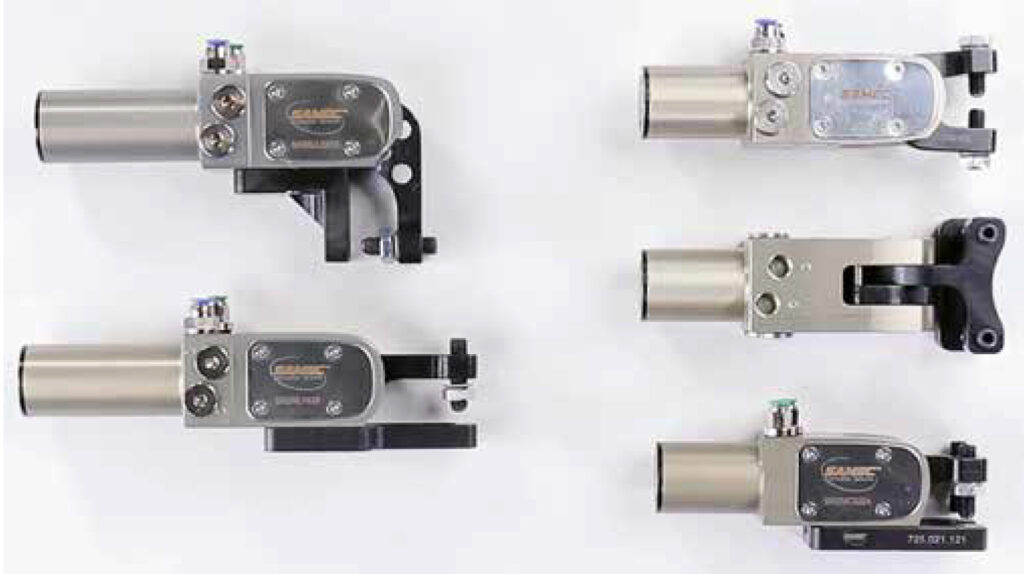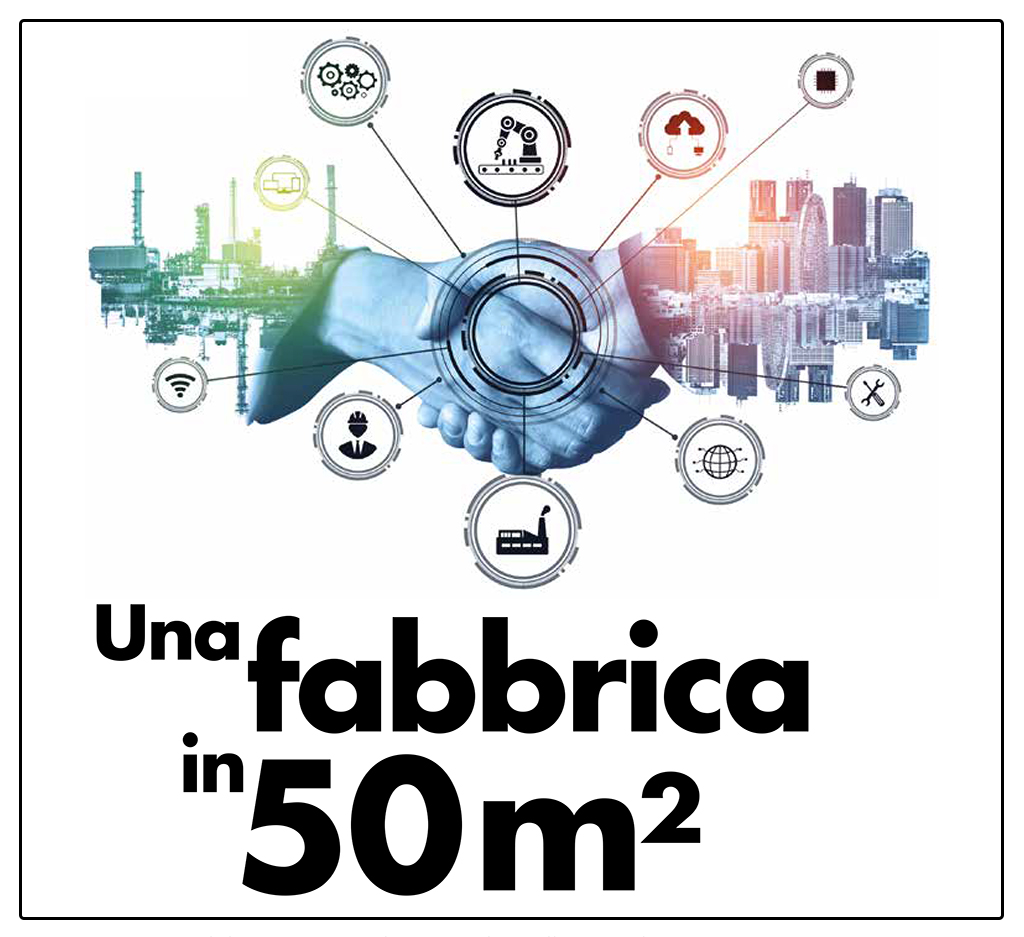A horizontal machining center with pallet changer, a 6-axis anthropomorphic robot, an automatic vertical warehouse, and a blowing and cleaning station for parts, all within 50 square meters. A challenge for Ingenia Automation.
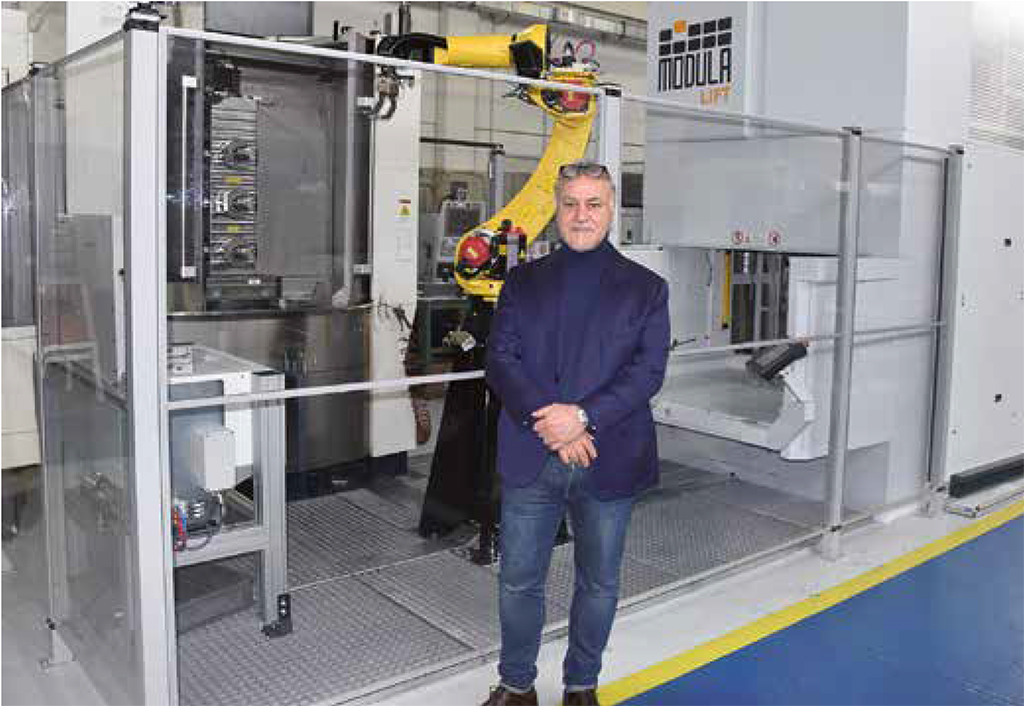
Nicola Scarlatelli,
Amministratore Unico
di Samec Automation Systems.
As is well known, the Italian entrepreneurial fabric is made up of 98% of businesses with fewer than 50 employees. Micro, small, and medium-sized enterprises (MSMEs) often find in their size the right incentives to come up with ingenious and effective solutions. With a history that began in 1974, Samec Automation Systems, specializing in the creation of automated systems for handling sheet metal for cold stamping, showcases its technical capabilities by relying on the skills of its 35 employees, with an average age of 34 and representing eight different nationalities. “One of our peculiarities,” Nicola Scarlatelli, who has been at the helm of the company in Cascine Vica Rivoli (province of Turin) since the beginning, told us, “is that we have always considered personal training and growth a great value, and for this reason, we have developed transversal skills that have allowed and continue to allow the company and our employees to adapt and reconfigure quickly according to the changes that have occurred, thus managing to overcome the difficult moments that, as history teaches, cyclically occur in the path of every company.” It is from this business philosophy that, in the last few months of 2021, the idea of a very interesting solution to improve the quality of the product and the processes related to the production of its line of pneumatic grippers was born.
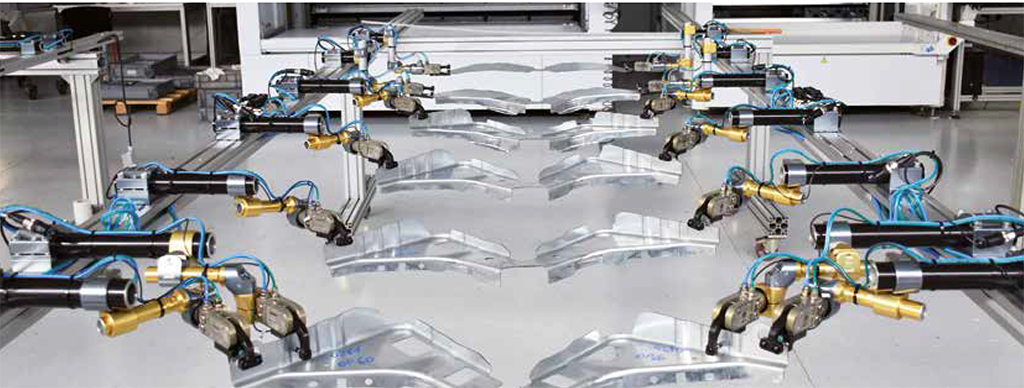
Samec's core business is the creation of systems to
automate sheet metal stamping processes,
such as the Pagurus Grip® pneumatic gripper line.
THE STARTING POINT
“Even though we are a small company,” continues Scarlatelli, “we manage the entire supply chain of our products internally and we often represent ourselves as a regular five-sided polygon – the pentagon – within which the phases of the processes reside. From design to the mechanical construction of the parts, from the assembly of entire systems to commissioning, up to after-sales service.” Originally established as a mechanical subcontracting workshop, Samec’s core business today is focused on the creation of automation systems for sheet metal stamping processes, primarily in the automotive sector and the white goods industry. In this context, the key component that determines the quality of the system is the gripping device, a pneumatic closure that embodies seemingly incompatible characteristics: small size and strength, lightness and robustness, uniqueness and versatility.
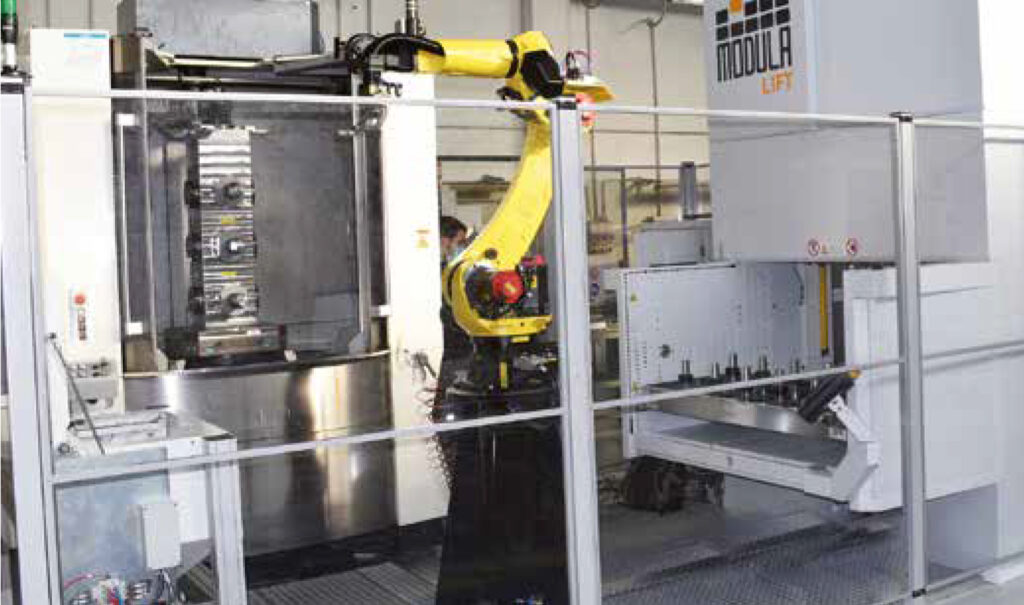
Certo, ecco la traduzione senza i tag `
`:
```html
To cope with the production of the
Pagurus gripper and all its
variations, Nicola Scarlatelli had
an idea: the creation of
a robotic island.
```
“Even though we are a small company,” continues Scarlatelli, “we manage the entire supply chain of our products internally and usually represent ourselves as a regular five-sided polygon – the pentagon – within which the phases of the processes reside. From design to mechanical construction of parts, from assembly of entire systems to commissioning, and post-sales assistance.” Founded as a subcontracting mechanical workshop, today Samec’s core business is focused on creating systems for automation in sheet metal stamping processes, mainly in the automotive sector and the white goods industry. In this context, the main component that determines the quality of the system is the gripping unit, a pneumatic closure that encompasses seemingly incompatible characteristics: small size and strength, lightness and robustness, uniqueness and versatility. These peculiarities are present in Samec’s “Pagurus Grip®” gripper, which allows it to transport from one phase of the stamping process to another in a safe, fast, stable, and repetitive manner.
This component – designed and developed in Samec and named after the small crustacean that perfectly identifies the described properties – can be configured in 857 different versions. It is not difficult to imagine that handling 857 codes in production can generate problems, mainly related to the necessary production times. It is precisely to cope with the production of the Pagurus gripper that Nicola Scarlatelli recently had an idea: the creation of a “different” and, in some respects, “unique” robotic island.
NEW PARADIGM
The central feature of the robotic island is flexibility. “In designing this solution,” explains Samec’s CEO, “we focused everything on a paradigm shift: the creation of flexible automation, capable of maintaining competitive production even for wide product families with medium to low volumes, making the production system capable of adequately responding to various market demands. In short, moving from an economy of scale to an economy of scope.
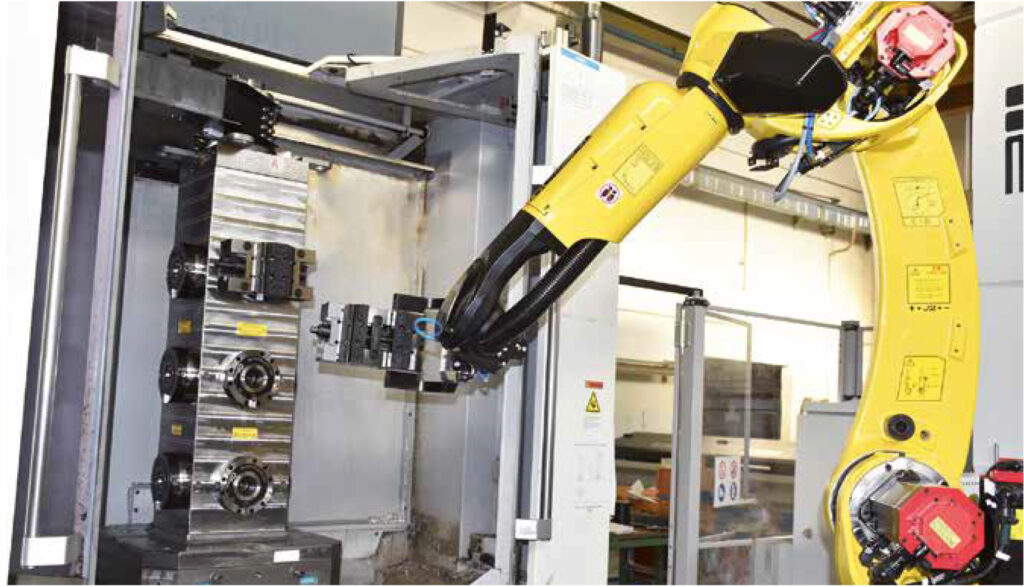
To achieve this, we tried to combine technology with creativity. The technology consisted of a MAKINO A61NX horizontal machining center with pallet changer, a FANUC M-20Id/35 anthropomorphic robot with a 35 kg wrist payload and a reach of 1,850 mm, a MODULA Lift ME25 vertical storage with fifteen 250 kg capacity trays to accommodate the dedicated equipment, and finally, an automatic station for cleaning the machined parts. Creativity found its place in defining the equipment, creating two 500 mm pallet cubes with four faces, each of which houses three ‘Zero Point’ tool mounting points, 60 vices to accommodate the various shapes that make up the end terminals or any quadrangular shape, and 60 self-centering chucks to host the four different types of gripper bodies.” The paradigm shift lies precisely in a kind of contamination between technology and creativity, which materializes in a machine tool known for its productivity in large numbers, capable of working on up to 12 different parts on the same pallet; a robot, which in the common imagination always performs the same movements, but in reality executes always different instructions; a storage system that provides the raw material, able to collect the variables that come from production management; and a suitably configured software capable of managing and communicating the entire system while respecting the programmed work order.

Scarlatelli: “We focused
everything on a paradigm shift:
the speed of the machine tool
dedicated to the production of the
gripper should also correspond
to flexibility in quickly changing
the tasks to be produced.”
“All of this,” continues Scarlatelli, “results in the ability to produce over 50 different part numbers in 24 hours without operator supervision. A type change management that takes us back in time when the artisan miller, with his professionalism, switched from one type of machining to another. We are confident that aspects such as remote management and verification, unattended production, and the great flexibility that characterizes this solution will allow us to achieve advantages in terms of quality, productivity, and satisfaction for both our customers and ourselves.”
A CENTRAL ROLE
The main strength of the robotic island developed by Samec is therefore the ability to work on up to 12 different parts with the same potential as serial production, all within an occupied space of only 50 m². “In our robotic island,” adds Nicola Scarlatelli, “the operators will have a central role. Their task, in fact, will not be limited to just loading and unloading raw and finished products, but they will be supervisors of the process, controllers of the product, suggesters of improvements and further paradigm shifts to share with the goal – the noblest one, in my opinion – that our factory can be a happy island for everyone.”
